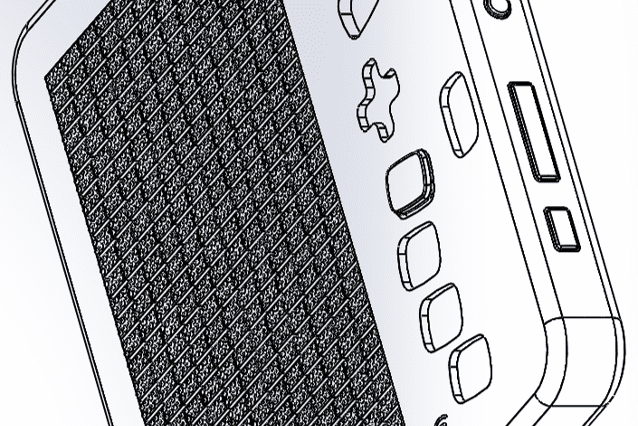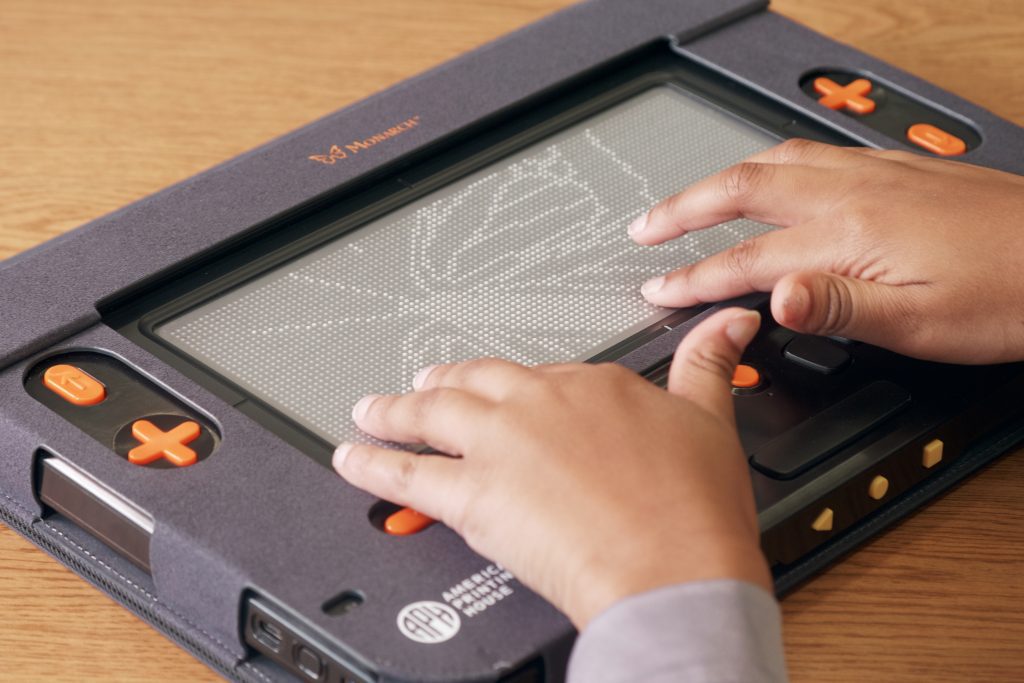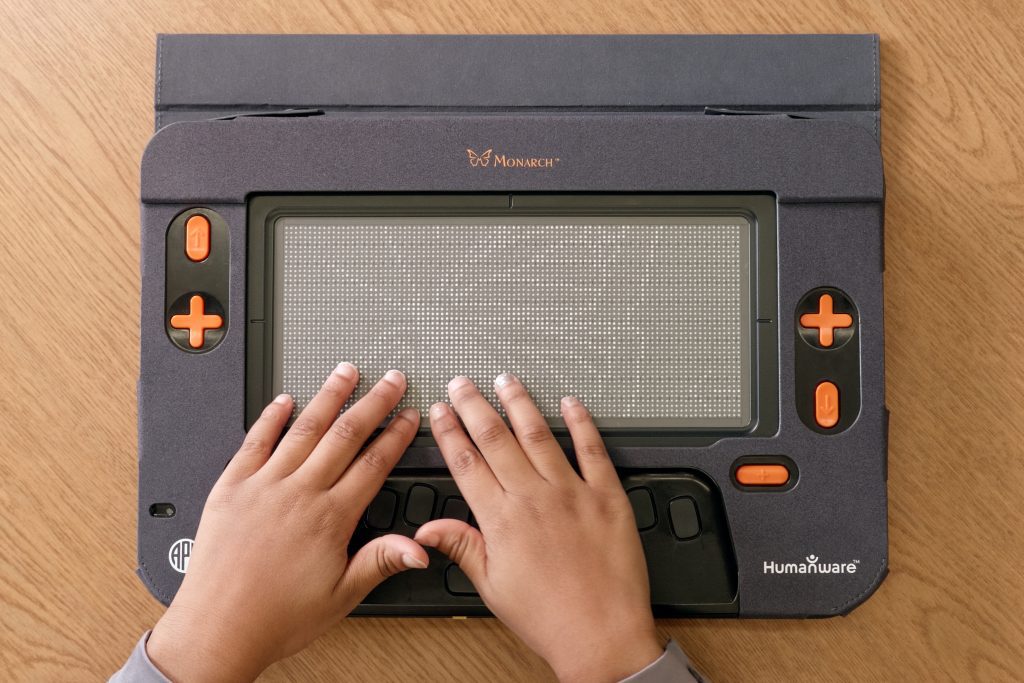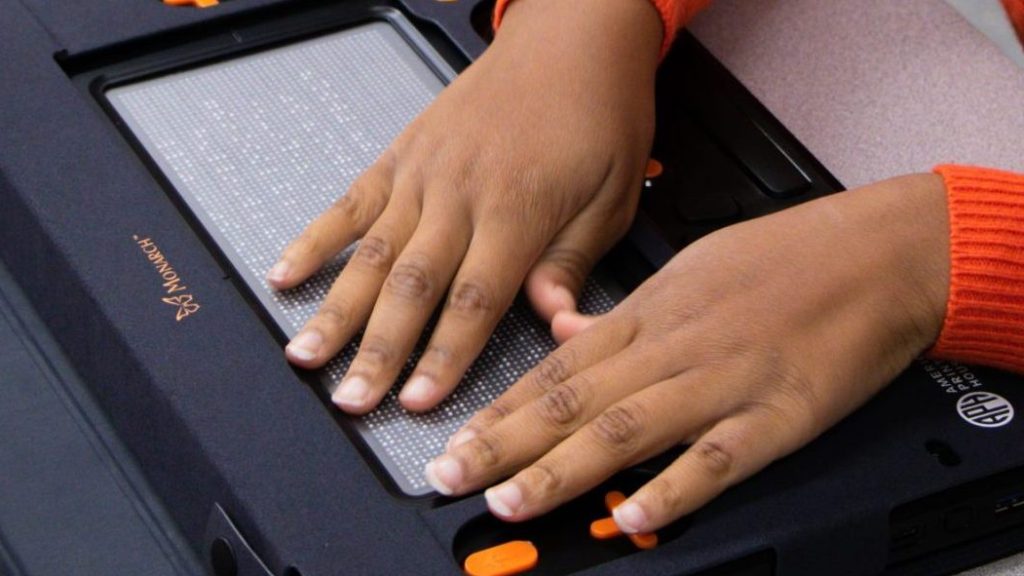DTD Fact Sheet

We’ve been talking a lot about the DTD but what exactly is it? Check out this fact sheet to learn more about this exciting new AT device.
What is the DTD?
The Dynamic Tactile Device (DTD) is a refreshable braille and tactile graphics display capable of showing traditional braille and tactile graphics on the same tactile surface. DTD is not its final name and just a working title. The final name will be announced closer to launch.
It is being developed by APH and HumanWare, in partnership with the National Federation of the Blind (NFB), and is using a new cell technology innovation from HumanWare’s technology supplier Dot Incorporated.
Why are we building it?
The primary purpose of the DTD is to decrease the time it takes for a student’s textbook to come from the publisher, through the transcription and production pipeline, and, ultimately, to their fingertips. Today, it is not uncommon for a student to receive a textbook weeks, if not months, after the start of the semester. One of the functions of the DTD will be to serve as a braille textbook eReader, ultimately reducing the time it takes for a student to receive their textbooks from a braille transcriber, and also lowering the cost of textbook production. That’s not the only reason why we’re building it. It will also increase student access to formatted braille, tactile graphics, and fundamentally change how they interact with tactile materials.
What is it? Like physically?
We can’t get very specific right now because we’re pursuing patents and there are rules about what can and can’t be patentable once it has been discussed publicly.
We can say that it will have braille dimensions that are the equivalent of 32 cells by 10 lines. We came to this page size based on extensive testing with students all over the country. This size was the best to balance cost, size of device, and size of display area.
Overall, the device will have similar dimensions to a modern gaming laptop, along with standard Wi-Fi and Bluetooth connectivity to ensure it plays an important role in today’s connected classrooms.
What does it do?
A lot! It will have similar functionality to notetaker braille displays that exist today with the main difference being that it will have multiple lines instead of one. This main difference is key because it will mean a whole new way of teaching and interacting with braille. Students will learn multiline dynamic braille editing, zooming and panning on tactile graphics, and viewing everyday images that normally don’t get made into tactile graphics.
How will pictures work? How will graphics be displayed?
There will be three ways that graphics can interact with the display. The first will be in tactile graphics made by a tactile graphics artist. These will be the best graphics available on the device, and they have the potential to be interactive in a way that no tactile graphic is currently. The second will be through A.I.-powered image processing. We’re a long way off from these kinds of images being as good as what a human can make, but with the addition of filters, focus control, and other neat tools, you’ll still be able to get more out of them than you’d expect. Finally, there will also be images rendered live from the screen reader. Support here will vary with each screen reader, but the option is there and we’re excited to explore the possibilities.
How much will it cost?
It’s still too early to say. We know it will be expensive, that much is clear. The question is how much we will be able to subsidize the cost to the customer. APH is actively pursuing several options that may allow us to subsidize at least some of the final cost.
Follow Along
The DTD is going to be an exciting development in the world of tactile literacy! We want folks to be aware of the direction we’re going as much as possible, but we also know that the proof will be in the actual device and what we’re able to deliver. Please, subscribe to APH News to stay up to date on the latest news about this device and follow us on Twitter, Instagram, LinkedIn, and Facebook.
If you’d like to help us field test this or other APH products in development, please, sign up!
To receive the latest announcements regarding APH’s Dynamic Tactile Device, sign up at Freelists.org Dynamic Tactile Device Announcements, input your email address, keep “Subscribe” selected in the dropdown menu, and then select “Next.” You should receive an email asking you to confirm your email address.
Share this article.
Related articles

Mastering the Monarch
The braille metamorphosis has begun! More than 40 teachers from across the U.S. are gathering in Orlando, FL prior to...

Monarch Field Testing Reaches Halfway Point
Friday, November 3rd marked the halfway point for Monarch Field Testing. Composed of three, two-week units of course content, the...

The eBRF Revolution
As you may have heard, we are working on two game-changing projects that, together, will alter the way we access...
